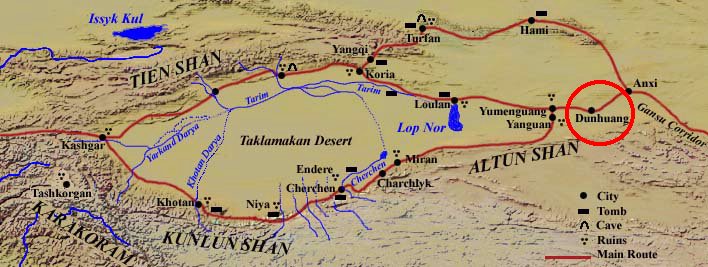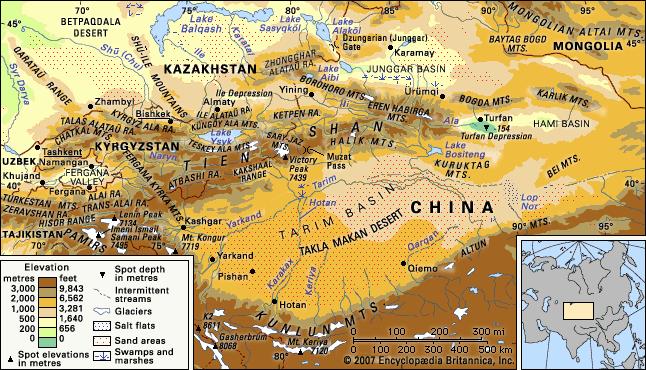5 Bizarre Forms of Ancient Taxes
/Food. Water. Fuel.
As it is, we already complain about the amount of taxes imposed on our necessities, they might as well charge us for the air we breathe. Not to mention the big chunk taken from our salaries every month, for supposed government funds.
But if you could pause and think about it, we should be grateful. Hundreds of years ago, rulers from different parts of the globe found really interesting, and mostly questionable reasons to raise funds. But we can’t really blame them.
It was a time when countries were almost always at war – either conquering a territory or protecting theirs. And tax provided great money for their militaries.
In this video, we’ll give you the top 5 most bizarre forms of ancient taxes. The following may sound funny now, but our ancestors sure made a lot of money out of them.
#5 — Cowardice Tax in England
Yes, there was no free room for cowards in the ancient times.
Despite the wars waging in different parts of the world today, that is still nothing compared to how life was centuries ago - when the world still revolved in conquest. Back then, the unspoken rule was - conquer or be conquered.
Of course, every invasion needs an army. And territories raised their men to fight. Joining the military was not an option but a requirement. It is a service that vassals owed their lord. And if they couldn’t give it, they had to pay.
Formally known as scutage, the cowardice tax was a sort of shield money for those who are not physically, emotionally, or mentally capable of going to war. It was a great way to extort money from nobles, but a chance that even some lowly citizens grabbed.
The first known form of scutage was established in 12th century England, under the reign of King Henry I.
History records show that it started with King Henry asking for a small amount of payment, which increased year after year, with the growing trend of a money economy.
As it was a practice advantageous to both sides, it easily spread to other European countries like France and Germany, although not as widespread as it was in England.
And by the start of the early 13th century, King John was already collecting scutage 300% more than its original worth. He also imposed payment from knights even in the years when there were no wars at all. This abuse prompted a Magna Carta that prohibits the royal court from imposing scutage without the permission of a great council. And by the 14th century, cowardice tax was officially banned.
#4 — Window Tax in England
In 1696, William III imposed an outrageous tax on houses or any other buildings that had more than 10 windows. The tax increased depending on the number of windows - from the flat rate of two shillings to the maximum of eight shillings.
It was meant to be a progressive tax. The idea was that poor families would have smaller houses and thus fewer windows. They would then be taxed less or none at all. The system actually worked for the rural poor, but it failed miserably for those in urban areas, who had to live in large tenement buildings. These settlements, although occupied by several families, were taxed as one whole house.
Imagine how many windows one tenement building has.
Landlords, who of course did not want to carry the burden of paying the huge amount of window tax, passed the problem to the tenants, who were subjected to higher rent.
In a bid to escape or at least lessen their window taxes, homeowners started constructing buildings with very few windows, or have their existing windows boarded up. To which, the government's answer was to lower the minimum number of windows allowed. The initial minimum of 10 windows became 7 starting 1766.
With the increasing population and decreasing number of windows, insufficient ventilation became a big problem. Medical professionals started complaining that dark and damp environments, especially in huge buildings, are possible sources of some diseases. Living close to each other could also easily cause these diseases to spread.
Their continuous campaigning reaped its reward in 1851. The window tax was finally repealed – 156 years after its creation, to be replaced by the more reasonable and still existing house tax.
#3 — Urine Tax, or Vectigal Urinae in Rome
Pecunia non olet. It was a famous saying in ancient Rome, which basically means “money does not stink.”
Back in 1st century AD, under the rule of Emperor Vespasian, urine was valued for its high ammonia content. It was considered the best weapon against dirt, and was widely used to wash clothes, tan leather, and mind you, to whiten teeth.
Back then, the lower Roman classes would urinate in pots, which were emptied in cesspools. While the higher classes used public bathhouses. Urine was collected from these facilities and recycled in various ways to transform into cleaning ingredients.
Emperor Vespasian, having noticed that a lucrative business has been created out of this practice, imposed a tax on people who bought this urine.
Thus the saying Pecunia non olet. Historians say it became famous after a particular conversation between Emperor Vespasian and his son Titus, who had been complaining about the smelly nature of the tax. They say Vespasian then held a gold coin and asked his son if it smelled. Of course, Titus said no, and to this, the emperor replied, "Yet it comes from urine."
Disgusting as it does sound, Vespasian did earn a lot of money from this practice. Because of his ruthless taxation, he was not only able to bring the Romans out of debt but also left a great sum of money for his successor. He was also able to order the construction of many Roman infrastructures, including the iconic Colosseum.
Until today, Pecunia non olet remains famous, to say that the value of money does not diminish just because it comes from stinky means.
#2 — Breast Tax or Mulakkaram in Kerala, India
There is a very long history of repression against women and the less fortunate around the world. And if you're a poor woman, prepare to have the world on your shoulders. This particular tax in Southern India made them feel very small indeed.
In the early 1800s, the caste system in India was at its most oppressive – so much so that both the men and women of the lower caste were not allowed to cover their chests when meeting members of the upper caste. Back then, clothing was a symbol of wealth and prosperity, and wearing one would have been considered disrespectful against the higher caste.
While the men were able to accept this law grudgingly, it was very disadvantageous for women, who were starting to see the merits of covering their breasts, especially when entering religious temples.
In the book Native Life in Travancore, Samuel Mateer explains how this practice ensured that the higher caste continued to thrive while pushing the lower caste to remain in a never-ending cycle of poverty and scarcity.
But a woman from Alappuzha will forever be remembered for changing the course of history, or at least, for giving women the courage to fight this oppression. Legend has it that this woman, named Nangeli, decided to fight the system at the cost of her life.
One day, when the tax collector arrived at her house to collect Mulakkaram, she laid a plantain leaf as usual. But instead of giving money, she suddenly cut off her breasts, put them on the leaf, and offered it to the shocked tax collector. Nangeli bled to her death, but she left a legacy that has been passed on through generations.
They say it was because of the repression women had to suffer during that time, but Nangeli's story never made it to any history books. However, the women of Kerala never once doubted its validity, and will forever look up to Nangeli as their hero.
#1 — Beard Tax in Russia
Back in the 1700s, Russia was led by a young yet legendary royal, in the name of Peter the Great, well known for leading the modernization of Russia.
In a bid to drag his motherland from its pastoral ancestry, Peter went on a year-long voyage across neighboring European countries, like Britain and the Netherlands, to learn about their relatively advanced military and trade techniques.
But when he came back to Russia, he adapted more than just their defense system, but also their fashion sense.
The court celebrated his arrival with a party consist of his most beloved aides and diplomats. Historians say that in the said ball, Peter the Great suddenly pulled out a razor and shaved off his friends’ beards one by one. Such was the court’s respect for the czar that they could only stare in horror at what he was doing.
He then ordered that every man in Russia should shave off his beard, for the reason that the clean-shaven look was what was considered fashionable in Europe at that time.
However, this received a negative reaction from the Russian Orthodox Church, who believed that shaving one’s beard would, in the words of Ivan the Terrible, disfigure the image of man as he was created by God.
This forced Peter the Great to re-consider his actions. Instead of ordering men to imitate his fashion sense, he imposed a yearly beard tax for those who preferred to keep their facial hair. The amount of payment depended on the man's social status. And those who chose to pay received a copper coin with the writing 'tax paid' as proof that they have been granted permission to keep their beard.
Infamous as it was, the beard tax remained in practice until 1772, 47 years after his death.
There you have it, the five most bizarre ancient taxes.
At least now you know that however suffocated you are from all the taxes you have to pay, at least you could freely cover your chest wherever you go, or grow your beard as long as you want to.
Sources:
Message to Eagle (Nov. 21, 2016). 10 Most Bizarre Forms of Ancient Taxes: Surprising and Funny. Retrieved from http://www.messagetoeagle.com/10-bizarre-forms-ancient-taxes-surprising-funny/
Handwerk, Brian (April 14, 2016). Feeling Overtaxed? The Romans Would Tax Your Urine. Retrieved from http://news.nationalgeographic.com/2016/04/160414-history-bad-taxes-tax-day/
The Editors of Encyclopædia Britannica. Scutage. Retrieved from https://www.britannica.com/topic/scutage
Medieval Sourcebook: England: The Collection of Scutage, 1159-1195. Retrieved from https://sourcebooks.fordham.edu/source/scutage.html
Hill, Bryan (July 12, 2015). Money Does Not Stink: The Urine Tax of Ancient Rome. Retrieved from http://www.ancient-origins.net/history-ancient-traditions/money-does-not-stink-urine-tax-ancient-rome-003408
The Scribe (June 4, 2007). At Least You Don't Pay Tax Urine. Retrieved from ancientstandard.com/2007/06/04/at-least-you-don't-pay-urine-tax...-1st-c-ad
Unni Nair, Supriya (Aug. 28, 2016). Dress Code Repression: Kerala's History of Breast Tax for Avarna Women. Retrieved from: http://www.thenewsminute.com/article/dress-code-repression-keralas-history-breast-tax-avarna-women-48982
Sebastian, Sheryl (SEpt. 12, 2016). Kerala's Casteist Breast Tax and the Story of Nangeli. Retrieved from https://feminisminindia.com/2016/09/12/kerala-breast-tax-nangeli/
Mancini, Mark (March 29, 2014). The Time Peter the Great Declared War on Facial Hair. Retrieved from http://mentalfloss.com/article/55772/time-peter-great-declared-war-facial-hair
Staff of Parliament.UK. Window Tax. Retrieved from http://www.parliament.uk/about/living-heritage/transformingsociety/towncountry/towns/tyne-and-wear-case-study/about-the-group/housing/window-tax/
Staff of History House. Window Tax. Retrieved from http://www.historyhouse.co.uk/articles/window_tax.html






















